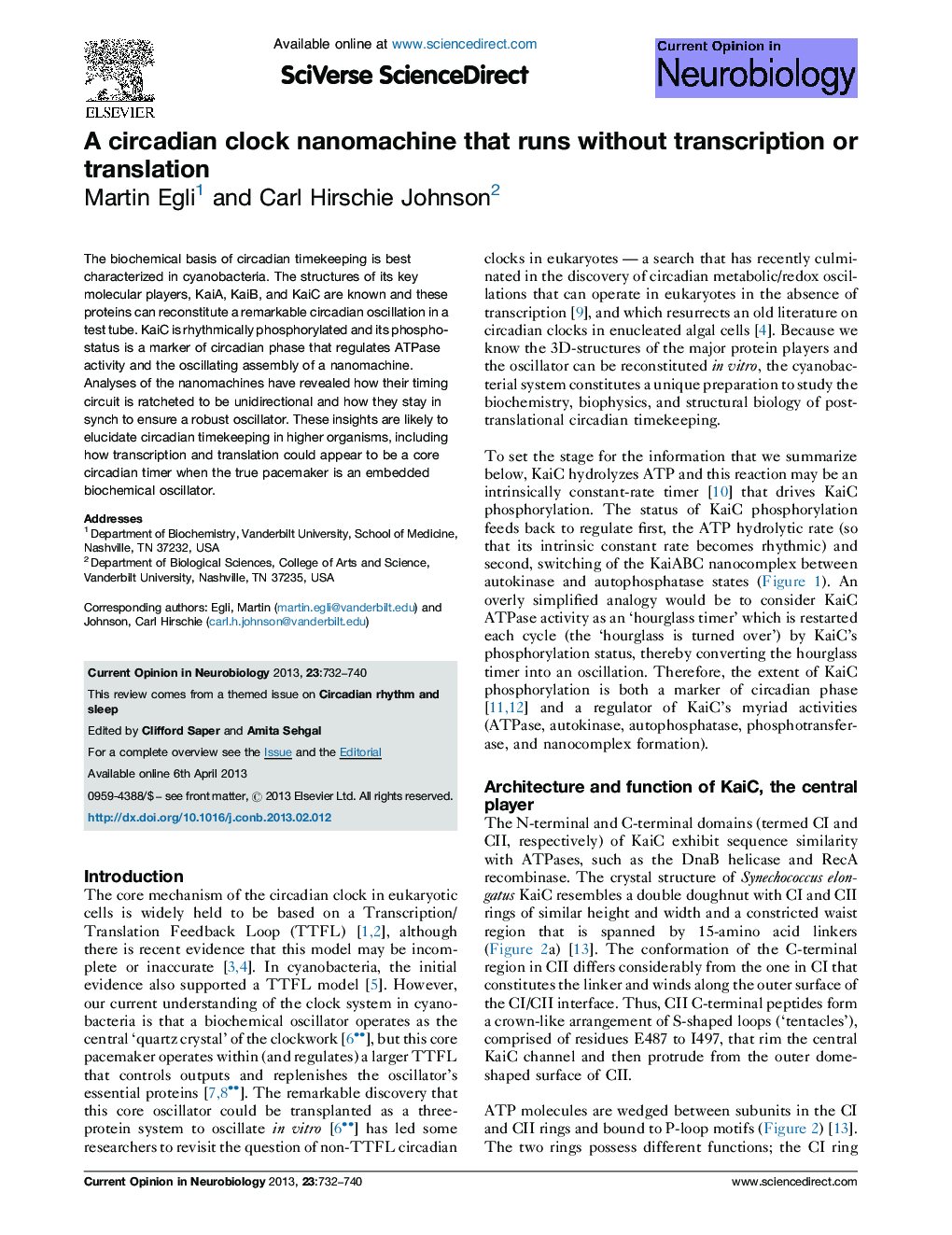| Article ID | Journal | Published Year | Pages | File Type |
|---|---|---|---|---|
| 6266589 | Current Opinion in Neurobiology | 2013 | 9 Pages |
The biochemical basis of circadian timekeeping is best characterized in cyanobacteria. The structures of its key molecular players, KaiA, KaiB, and KaiC are known and these proteins can reconstitute a remarkable circadian oscillation in a test tube. KaiC is rhythmically phosphorylated and its phospho-status is a marker of circadian phase that regulates ATPase activity and the oscillating assembly of a nanomachine. Analyses of the nanomachines have revealed how their timing circuit is ratcheted to be unidirectional and how they stay in synch to ensure a robust oscillator. These insights are likely to elucidate circadian timekeeping in higher organisms, including how transcription and translation could appear to be a core circadian timer when the true pacemaker is an embedded biochemical oscillator.
⺠A biochemical circadian oscillator can be reconstituted with three proteins and ATP. ⺠The biochemical oscillator drives a Transcription/Translation Feedback Loop in vivo. ⺠Activities of the core protein include ATPase, kinase and phospho-transferase. ⺠Structural insights explain unidirectionality, synchrony, robustness, and entrainment.
